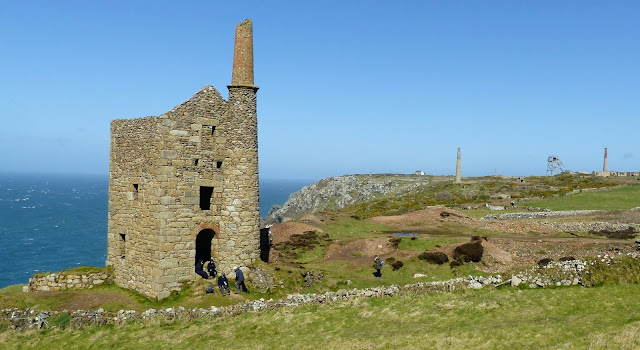I was pleased to see so many comments on the posting of 13th September regarding the likely scrapping, after 130 years, of the undergraduate course in mining engineering at Camborne School of Mines. The University of Exeter obviously have their reasons for doing this, but one of the correspondents to the posting said that "training mining and mineral processing engineers is not a popular pursuit simply because the actual work is no longer in Britain". This unfortunately is a misconception that is widely held- since the demise of coal mining, there is no longer any mining in UK. This is not true, however, there is a dynamic mining industry in Britain, and much of it, ironically, is in Cornwall.
As well as an established china clay mining industry, there is a great deal of mining activity in Cornwall at present, with the development of lithium extraction, and new deposits of tin and copper being developed, as well as geothermal energy. There are also numerous mining and mineral processing service companies, which are fully listed on the Cornwall Mining Alliance website. Many Camborne School of Mines graduates are gainfully employed in these areas.
Geothermal Engineering Ltd continues to push forward with the United Downs deep geothermal power project and has recently completed the first phase of testing on the wells. The production well is 5.275km deep and the temperature is now confirmed at 188 degrees Celsius. Further well testing will be undertaken in October and the project aims to produce power in late 2021.
The latest results from Cornish Lithium are also very exciting. Lithium levels in the geothermal brines were always expected to be high but the water chemistry does suggest that low carbon lithium extraction will also be possible at the geothermal site. The combination of deep geothermal power, heat and lithium could be a big part of the future in Cornwall (MEI Blog September 18th).
And geothermal brines are not the only source of lithium in the county. British Lithium Ltd is the first company in the UK to explore for hard rock lithium and the only one so far to have established a resource, in the St Austell area, well known for its china clay deposits. It now aims to build a quarry and refinery in Cornwall that will produce 20,000 tonnes per year of lithium carbonate, and has been awarded £500,000 of government funding to progress research and development of lithium extraction from granitic lithium micas.
Cornwall is synonymous with copper and tin mining, and its legacy can be seen all over the county, with its iconic abandoned engine houses, a haven for artists and photographers.
The last tin mine to close was South Crofty in Camborne in 1998. The mine is now being redeveloped and an unexpectedly high-grade intersection of 2.19% tin has been reported more than 100 metres below any historic mining. Cornish Metals Inc. said the results reflected the mine’s potential and the possible discovery of “economic structures” in areas of the mine not previously considered. The company contrasted the findings with the Renison Bell underground tin mine in Tasmania which mined an average grade of 1.32% tin in 2019. Chief executive of Cornish Metals, Richard Williams, said: “The intermediate lode structure was predicted by our geological team to be in this area but such a high-grade intersection so far beneath the old mine workings was not anticipated. It does reinforce the exploration potential at South Crofty and our ability to find economic structures within areas of the mine that have been previously overlooked".
South Crofty is an ancient mine which produced copper and then tin for over 400 years. In east Cornwall, near the Devon border, is another ancient mine which is currently under development by the Redmoor Tin-Tungsten-Copper Project. The original Redmoor Mine is one of a group of mines that were opened in the 18th century and continued operating until 1892 when they were forced to close due to low tin prices. Sections of the Redmoor Mine were re-opened between 1907 and 1914 and again in 1934. Redmoor now ranks as one of the leading undeveloped tin-tungsten mining projects in the world, having recently revealed a new mineral resource estimate. It is estimated that Redmoor contains some 137,000 tonnes of inferred tin resources, up from 45,000 tonnes. This provides the company and its joint venture partner, New Age Exploration, confidence to progress towards the goal of restarting mining at Redmoor.
And apart from all this, the UK's four major minerals industry conferences next year, Physical Separation '21, IntegratedMinPro '21, Biomining '21 and Sustainable Minerals '21 will be held in Falmouth next June, hosted by Cornwall-based MEI.
Things are happening in Cornwall! All the more reason to wonder at the University of Exeter's decision to 'pause' recruitment to the undergraduate mining engineering degree at Camborne.






































.jpeg)




